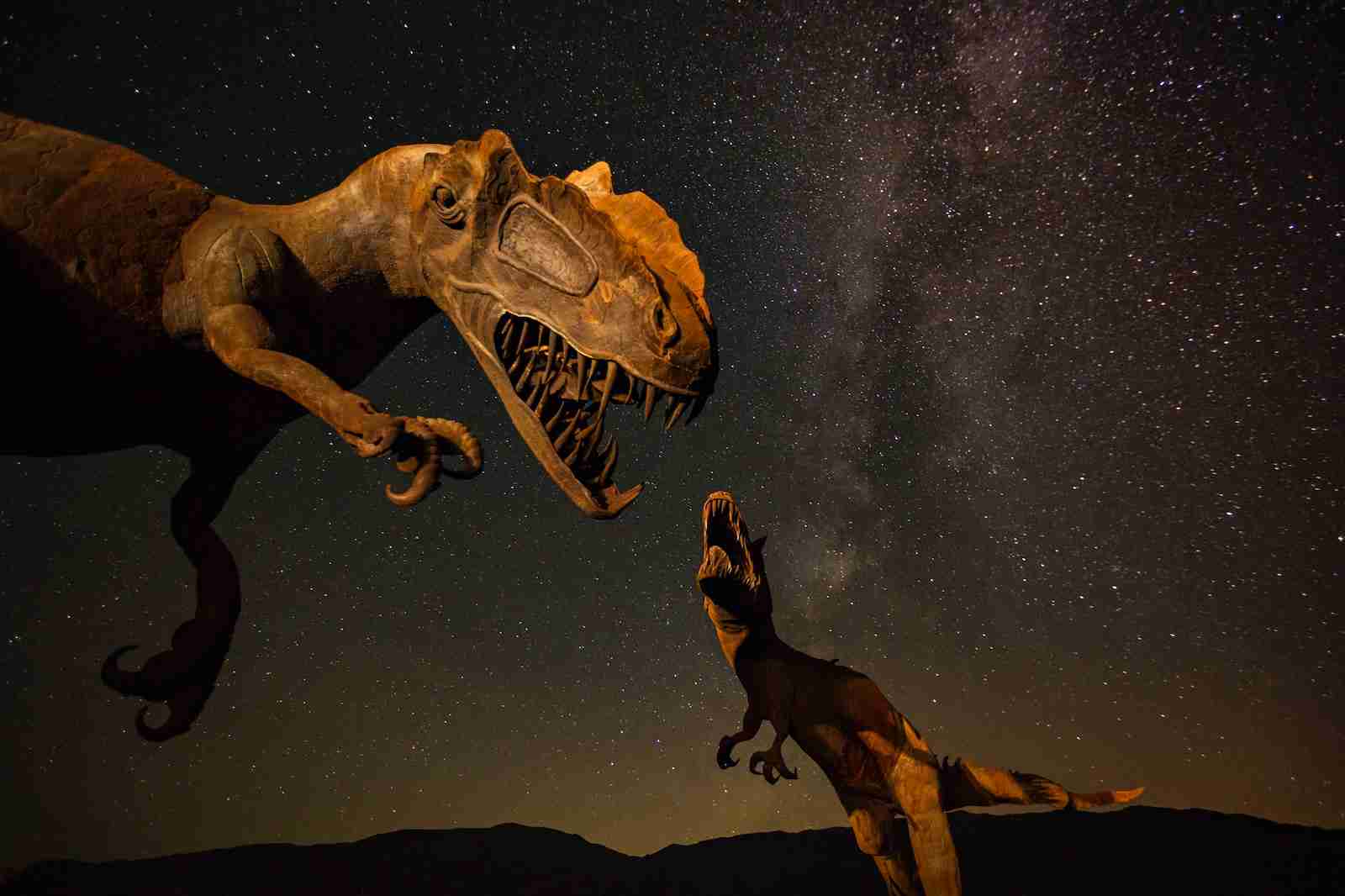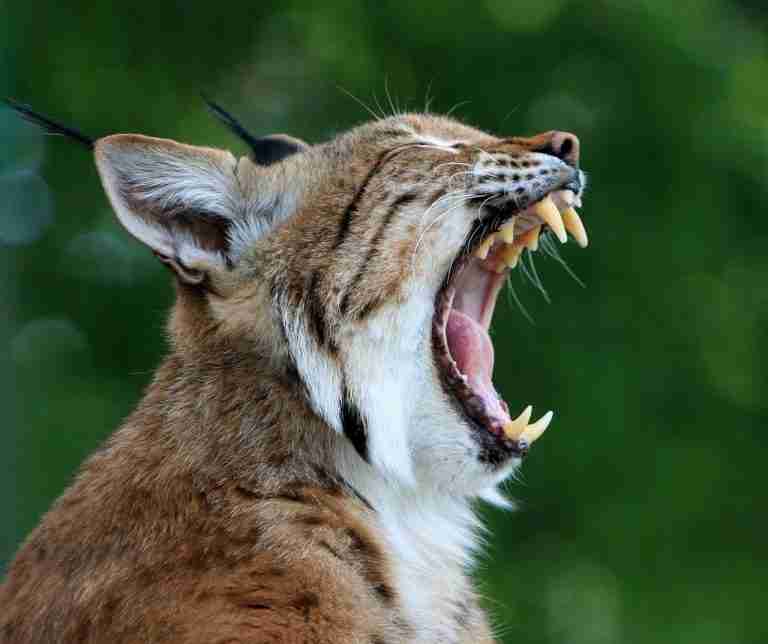24 Fun Facts About Dinosaurs | Fossilized Legends
1. The term ‘Dinosauria’ was coined in 1842 by Sir Richard Owen.
In 1842, British paleontologist Richard Owen coined the term ‘Dinosauria,’ meaning ‘fearfully great reptiles.’ It is derived from the Greek words ‘deinos’ (terrible) and ‘sauros’ (lizard).
Before Owen’s terminology, these creatures were often referred to as ‘Dragons.’ Interestingly, Owen, known for his work in comparative anatomy, initially used this term to argue against progressive evolution.
2. Scientists have identified around 700 species of extinct Dinosaurs.
Scientists have unearthed fossils of about 700 different dinosaur species across all seven continents. While over 300 genera have been validated, the quest continues, with paleontologists suggesting many more species await discovery.
This extensive research into extinct dinosaurs reveals a rich and diverse prehistoric world, hinting at even more undiscovered wonders from the age of these fascinating creatures.
3. Dinosaurs thrived for about 245 million years on Earth.
Dinosaurs, the dominant land animals of the Mesozoic Era, roamed the Earth for about 180 million years, from 245 to 66 million years ago.
This era, long before humans appeared, is divided into the Triassic, Jurassic, and Cretaceous periods. Their reign, spanning significantly longer than human history, marks a profound chapter in Earth’s prehistoric timeline.
4. Megalosaurus, named in 1824, was the first Dinosaur to be identified.
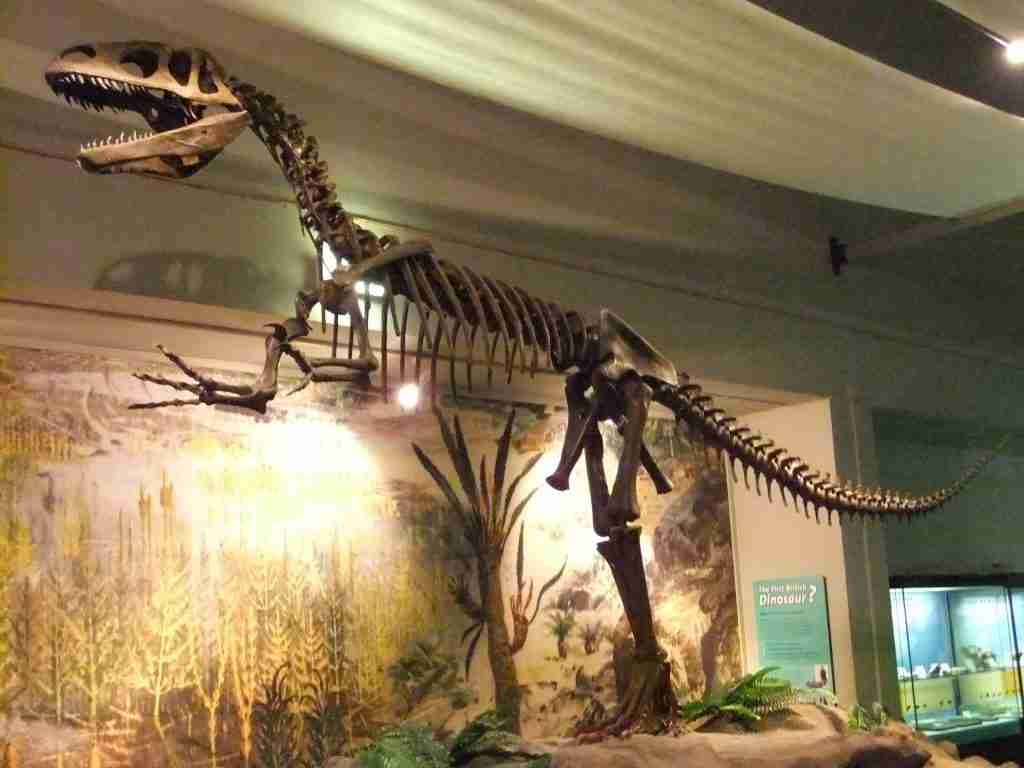
In 1824, Megalosaurus became the first officially named non-avian dinosaur. William Buckland, an Oxford scientist, described this genus after studying fossils from Stonesfield.
Recognized for its carnivorous nature and impressive size of about 40 feet, Megalosaurus played a key role in Richard Owen’s 1842 definition of the term ‘Dinosauria.’ Its specific name, Megalosaurus bucklandii, was established in 1827.
5. The first Dinosaur fossils in North America were found in 1854.
In 1854, Ferdinand Vandiveer Hayden discovered North America’s first dinosaur fossils in Montana, near the Missouri River. These teeth, attributed to a duck-billed dinosaur named ‘Trachodon’ by paleontologist Joseph Leidy, marked a significant find.
Just two years later, Leidy described the first nearly complete dinosaur skeleton, Hadrosaurus foulkii, unearthed in New Jersey, opening a new chapter in paleontology.
6. Nyasasaurus Parringtoni is recognized as the oldest known Dinosaur.
Nyasasaurus Parringtoni, dating back about 243 million years, is potentially the oldest known dinosaur. Its age makes it either the earliest dinosaur or its closest relative, a significant find in paleontology.
Discovered in Tanzania in the 1930s by Rex Parrington and later studied by his student Alan Charig, this small dinosaur is known from just an upper arm and back bones.
7. Micropachycephalosaurus holds the record for the longest Dinosaur name.
Micropachycephalosaurus, named in 1978, holds the record for the longest dinosaur name with 23 letters. This tiny plant-eater, measuring only 0.5 to 1.0 meters long, lived in China about 83 to 73 million years ago during the late Cretaceous Period.
Its name, meaning “tiny thick-headed lizard,” reflects its distinctive thick skull. Discovered by Chinese paleontologist Dong, it’s a unique find from that era.
8. Theories suggest an asteroid impact contributed to the mass Dinosaur extinction.
Most scientists believe a massive asteroid impact, around 65 million years ago, was a key factor in the dinosaurs’ extinction. This event, creating the Chicxulub crater in the Yucatan Peninsula, likely led to drastic climate changes.
While theories vary, including volcanic activity and shifting climates, the asteroid’s impact is central. It triggered a series of changes, not instantly, but gradually leading to the demise of these prehistoric giants.
9. The largest Dinosaur eggs found measure nearly 20 inches.
The largest dinosaur eggs ever found measured an impressive 20 inches in length, resembling the size of basketballs. Discovered in China in the 1990s, these oviraptorosaur eggs weighed about 5 kg each.
Interestingly, the bigger the egg, the thicker its shell, limiting the size to ensure hatchlings could emerge. While all dinosaurs laid eggs, these remain the largest, with the smallest known eggs being just 0.7 inches long.
10. Baby Dinosaurs often had larger eyes than adults.
Baby dinosaurs were born with notably large eyes relative to their body size. As they grew, their body proportions changed, making their eyes appear smaller in comparison.
Research, including studies on young Diplodocus skulls, reveals that juveniles had distinctively different head shapes compared to adults. They had larger eyes, more pointed snouts, and less square jaws, highlighting significant changes as they matured.
11. The Mesozoic Era, lasting over 180 million years, was the age of Dinosaurs.
The Mesozoic Era, spanning 252 to 66 million years ago, is famously known as the age of dinosaurs. This era, sandwiched between the Paleozoic and Cenozoic Eras, is divided into three periods: Triassic, Jurassic, and Cretaceous.
Dinosaurs first appeared in the Triassic, flourished through the Jurassic, and evolved further in the Cretaceous, before their extinction 66 million years ago, marking a significant chapter in Earth’s history.
12. Scientists can tell what a Dinosaur ate by looking at its teeth fossils.
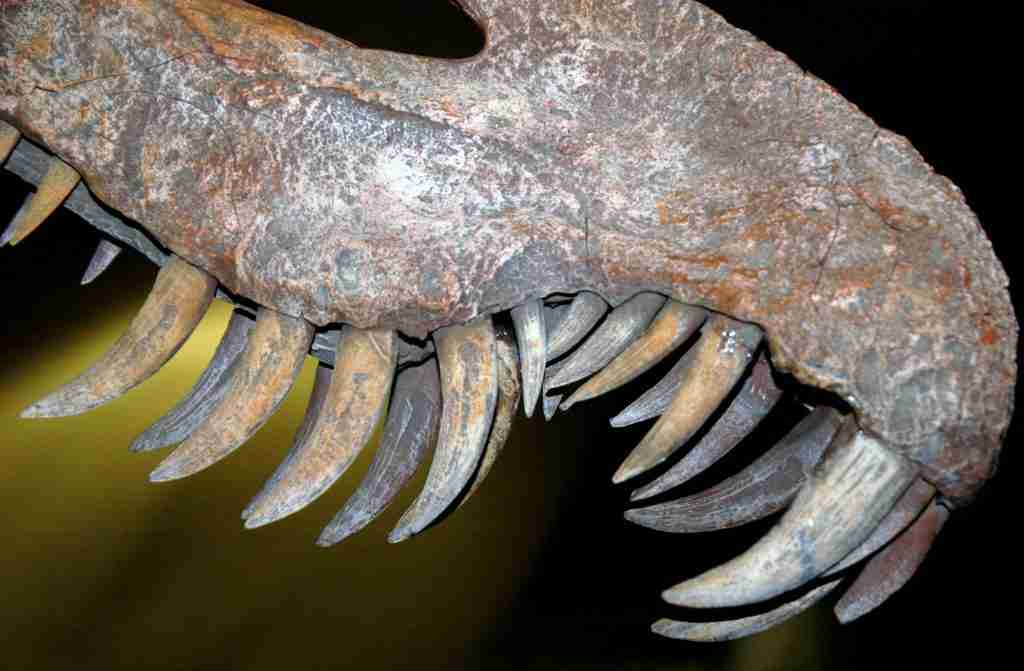
Scientists can determine a dinosaur’s diet by examining its fossilized teeth, which are often better preserved than bones. The shape and wear patterns of these teeth offer clues about their eating habits.
For instance, sharp, curved teeth like those of Allosaurus indicate a meat-eating diet. Microscopic analysis of scratches and wear further reveals details about their food and feeding behavior, providing insights into their lives.
13. The smallest Dinosaurs were the size of a chicken.
Compsognathus, among the tiniest known non-avian dinosaurs, was similar in size to a chicken, measuring around 60-90 cm long, including its tail, and weighing about 5.5 kg.
This agile Early Jurassic predator featured a slender build, with a long neck and tail, robust hind limbs, and notably small forelimbs, making it a unique and fascinating dinosaur.
14. Stegosaurus, a plant-eater Dinosaur, had a brain the size of a walnut.
Stegosaurus, known for its small brain relative to its body size, had a brain comparable to a walnut, surprisingly small for a dinosaur reaching up to nine meters in length.
Discovered in the late 1800s, this herbivore’s tiny brain puzzled scientists, debunking myths of a “second brain” and revealing just an enlarged spinal cord area, aiding in leg and tail control.
15. The oldest Dinosaur footprints are estimated to be 249 million years old.
The oldest dinosaur footprints, dating back 250 million years, offer insights into early dinosaur evolution. Tracks from Wióry, around 248-249 million years old, show quadrupedal prints, indicating limited diversification.
However, 246-million-year-old bipedal footprints from Baranów suggest the presence of larger-bodied dinosaurs. Known as Sphingopus, these 15-centimeter-long tracks mark a significant point in understanding dinosaur development and behavior.
16. Velociraptors, the size of turkeys, were discovered in the Gobi Desert.
Velociraptor, a genus of small dinosaurs, lived in Asia about 75 to 71 million years ago, with fossils found in Mongolia’s Djadochta Formation and China’s Bayan Mandahu Formation.
First identified in 1924, this genus includes two species, V. mongoliensis and V. osmolskae, recognized for their turkey-sized stature and discovery in the Gobi Desert.
17. You can tell the difference between a Dinosaur fossil and a stone by licking it.
Paleontologists sometimes use a unique method to identify a dinosaur fossil: they lick it. Since bone is porous, a potential fossil will stick to the tongue if it’s genuine. This is because the porous nature of bone allows air or liquid to pass through.
While effective, this technique has obvious downsides. Other methods include checking the weight, color, surface texture, and looking for pores, all crucial in distinguishing fossils from
18. The price of a Dinosaur fossil can range from a few dollars to a few million.
Dinosaur fossils vary widely in price, from just a few dollars to millions. For instance, a nearly complete Tyrannosaurus rex skeleton, known as Stan, fetched a staggering $31.8 million at a Christie’s auction.
While a complete dinosaur skeleton can cost several millions, individual items like a real dinosaur tooth can range from $20 to thousands, depending on rarity and quality. Bone fragments and eggshells are more affordable.
19. The speediest Dinosaur, the ostrich mimic ornithomimids, runs at speeds of up to 60 kph.
The ostrich mimic ornithomimids, like Dromiceiomimus, were among the fastest dinosaurs, capable of reaching speeds up to 60 kilometers per hour.
These bird-like, feathered dinosaurs were identified as swift runners based on fossilized footprints, indicating they could sprint at impressive speeds.
20. Dinosaur skulls usually had big holes in their skull behind their eye sockets.
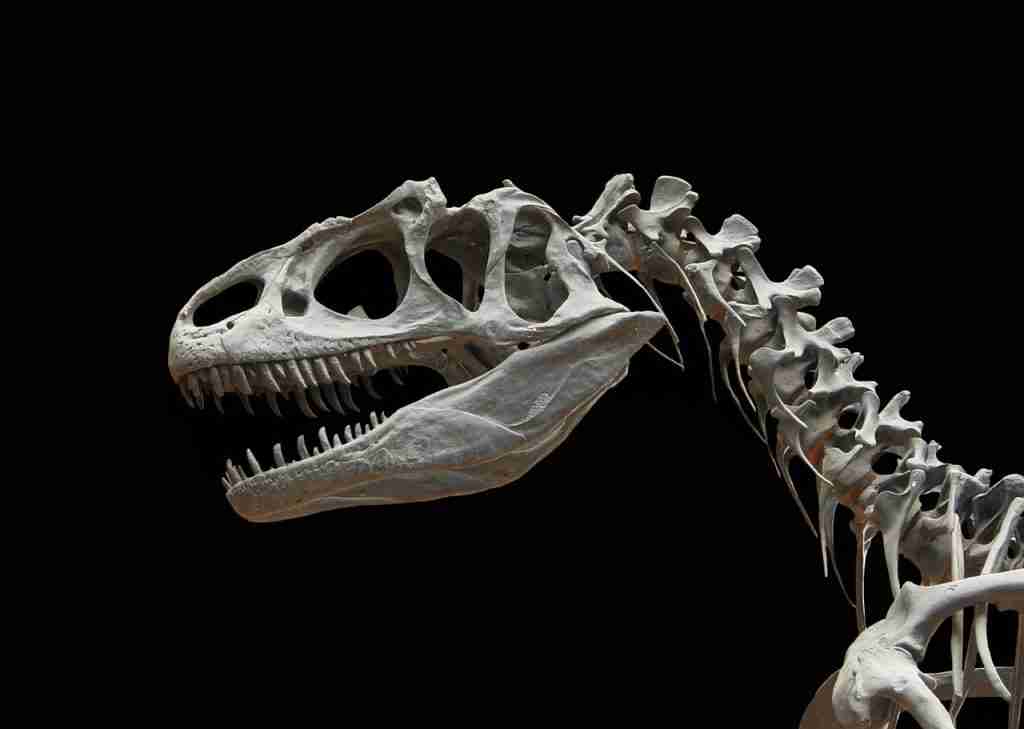
Dinosaur skulls featured large holes, known as fenestrae, which made their heads lighter and aided in cooling. These included the antorbital fenestra in front of the eye socket and the infratemporal fenestra behind it.
Additionally, there were holes in the jawbone (mandibular fenestra) and on top of the head (supertemporal fenestra). These openings also allowed for stronger jaw muscles, contributing to a more powerful bite.
21. Evidence suggests some non-avian Dinosaurs had feathers.
Recent discoveries and advanced technology have revealed that many non-avian dinosaurs had feathers or feather-like coverings. Found mostly in coelurosaurian theropods, these features have also been identified in at least three ornithischians.
This suggests that feathers might have been common in the Ornithoscelida group, which includes both theropods and ornithischians, indicating a feathered common ancestor.
22. Triceratops had three large horns and was a plant-eater Dinosaur.
Triceratops, known for its three large horns and a spiky head plate, roamed western North America about 69 million years ago. Despite its formidable appearance, this late Cretaceous herbivore was a plant-eater.
Latin for ‘three-horned face,’ Triceratops was one of the last dinosaurs before the mass extinction 66 million years ago, with numerous fossils found in Montana’s Hell Creek Formation.
23. Argentinosaurus, weighing up to 77 tonnes, was the heaviest Dinosaur.
Argentinosaurus, possibly the largest land animal ever, weighed an astounding 77 tonnes, equivalent to 17 African elephants. Measuring 30-35 meters in length, this titanosaur from the Late Cretaceous period set records for both weight and size.
Discovered in Patagonia by a farm worker, its immense size was confirmed by the enormous dimensions of its femur, surpassing all previously known giant animals.
24. There is a National Dinosaur Monument in the United States on over 210,000 acres.
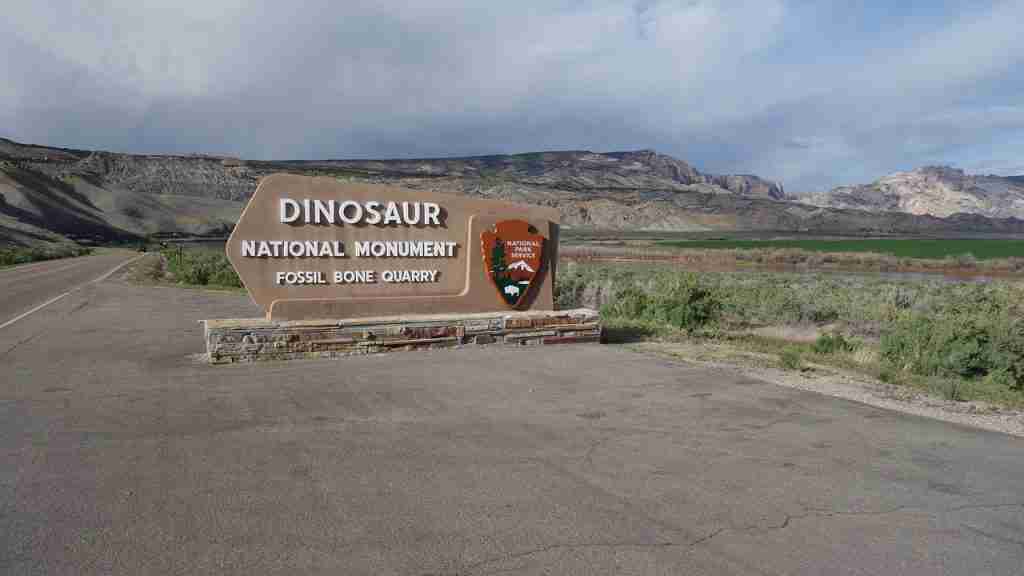
Dinosaur National Monument, straddling the Colorado-Utah border, spans over 210,000 acres and is renowned for its extensive dinosaur fossils. Established in 1915 and expanded in 1938, it houses over 800 paleontological sites with fossils of various dinosaurs like Allosaurus and Abydosaurus.
Unique for its visible fossils at the Douglass Quarry, the monument offers a rare glimpse into the Jurassic era, attracting both scientists and tourists.
FAQs
Dinosaurs, extinct for over 65 million years, have DNA too old for cloning. Genetic material doesn’t typically last beyond a million years, and scientists haven’t found complete carcasses with preserved skin or muscle.
Patagotitan Mayorum, the largest dinosaur discovered, was a massive, long-necked herbivore that lived over 100 million years ago in present-day Patagonia, Argentina.
Sixty-six million years ago, a catastrophic asteroid impact ended the dinosaurs’ 180-million-year reign. This event, possibly coupled with volcanic eruptions and gradual climate changes, marked a dramatic close to their era.
Dinosaurs became extinct around 65 million years ago, at the end of the Cretaceous Period, after thriving on Earth for approximately 165 million years.
Estimates suggest that during the Mesozoic Era, there were 1,543 to 2,468 dinosaur species globally, more than currently known from fossils. Theropods had nearly double the species compared to sauropods and ornithischians.

